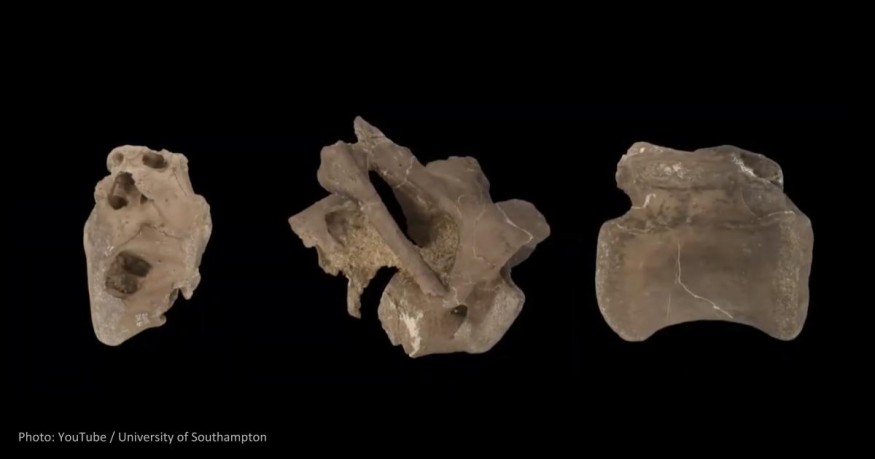A new dinosaur species related to the Tyrannosaurus rex was found on the Isle of Wight. University of Southampton paleontologists speculate that the four bones they discovered last year in the town of Shanklin are a new member of the theropod dinosaur species.
The creature was dated to have lived during the Cretaceous Period, around 115 million years in the past. It has an estimated maximum length of 13 feet. Scientists named it the Vectaerovenator inopinatus, classifying it as a member of the dinosaur group that includes the Tyrannosaurus rex as well as modern birds.

READ: Mammoth Skeletal Specimen Found Well-preserved from a Lake in Siberia
Air Sacs Within the Bones
The name given to V. inopinatus is a reference to some of the creature's bones having large air sacs—air spaces on the bones on its neck, back, and down to its tail. This trait is also one of the characteristics, which scientists considered in classifying it as a theropod.
According to the paleontologists, bone air sacs are also present in extant birds. These sacs are lung extensions, which have many purposes, such as giving them an efficient respiratory system as well as making their bones lighter.

Separate Fossil Discoveries
The dinosaur's fossils were discovered in three independent excavations last year. The bones were given to and displayed in the Dinosaur Isle Museum in nearby Sandown town.
Stratford-upon-Avon resident Robin Ward is a fossil hunter who made one of the discoveries while on a family trip in the Isle of Wight. Spalding, Lincolnshire resident James Lockyer was also a visitor of the Isle when he also discovered fossils.
Lockyer said the bones were different from the vertebrae of the marine reptile he discovered in the past. He was searching in an area in Shanklin, a place where he read and was told that there was nothing much to find. He always made sure, however, that he searched areas that others don't, which paid off this time.
Another discoverer, Ryde resident Paul Farrell, said that he was walking on the beach and kicking stones when he discovered something that looked like a dinosaur bone. He was shocked to find that it may be a new dinosaur species.
FAQ: Animal Attacks: Is Playing Dead the Key?
The Importance of the Discovery
University of Southampton's Chris Barker, the study's lead researcher, said that the hollow bones of the creature made an impression on the scientists because they were riddled with a lot of air sacs. He said that the skeleton's parts must have been delicate.
Barker added that a European record of a theropod dinosaur dated from the mid-Cretaceous is not abundant, so it was fascinating for the discovery to have added to science's understanding of dinosaur diversity during the Cretaceous.
Also, he says that it is also uncommon to find fossils from Shanklin deposits because they were formed in a saltwater habitat. It is more common, he says, to discover driftwood and fossil oysters. That means that this theropod fossil is indeed a rare discovery.
The researchers think that the animal lived just north of the area where its fossils were discovered; its carcass may have washed out to the nearby shallow sea.
The findings of the study will be published in Papers in Palaeontology, with the discoverers to be credited as co-authors.
© 2026 NatureWorldNews.com All rights reserved. Do not reproduce without permission.





